Matthew Yglesias recently tweeted,
Zoning is a plot by Blackrock, which owns one third of the American housing supply, to prevent new construction from competing away their profits — don’t be a dupe for private equity, reform land use regulation today!
— Matthew Yglesias (@mattyglesias) January 7, 2025
That’s a nice hypothesis, but it doesn’t stand up to scrutiny. As noted in this article, “Who Owns the U.S. Housing Market,” some 68 percent of the 146 million homes in the U.S. are single-family homes, and less than 4 percent of single-family homes are owned by “institutional investors” who own at least 100 homes. Those same investors own about 40 percent of multifamily housing. That means all institutional investors combined, of which Blackrock is only one, own about 20 million homes, or about 14 percent of housing.
While Blackrock won’t say how many homes it owns, it does point out that a similarly named company, Blackstone, has invested heavily in rental housing, which may have led to some confusion. However, even Blackstone owns only a tiny fraction of U.S. housing.
The real culprits in today’s housing crisis are environmental groups such as the Greenbelt Alliance, which has successfully fought off any proposals to expand urban-growth boundaries in the counties surrounding San Francisco, and 1000 Friends of Oregon, which challenges almost every proposal to expand urban-growth boundaries in Oregon. These groups have promoted the creation of artificial land shortages for housing, which in turn have led local governments to promote high-density developments that cost more than single-family homes but most American wouldn’t want to live in even if they cost the same as single-family homes.
Americans not only want to live in single-family homes, they want to live in single-family neighborhoods. In 1890, there was no assurance that a single-family neighborhood would remain that way, so urban homeownership rates were only about 16 or 17 percent. Developers discovered they could dramatically increase sales by adding protective covenants requiring that buyers of home sites use their lots only for single-family homes. New York City invented zoning explicitly to provide the same assurance for neighborhoods that had already been built.
By 1960, covenants and zoning had protected most American single-family neighborhoods from incompatible uses and urban homeownership rates had nearly quadrupled. People obviously liked this assurance. Nor was single-family homeownership a hardship, as homeownership rates among blue collar families were about the same as for white collar families. In fact, U.S. inequality fell to its lowest levels in history in the 1960s. All of this took place long before Blackrock was created in 1988.
Then environmentalists convinced many state legislatures to “stop urban sprawl” by passing laws forbidding or restricting the expansion of cities. First was Hawaii in 1961; then California passed an annexation law in 1963 that morphed into urban-growth boundaries; then Oregon in 1973; and several other states followed. These laws made housing expensive, reduced homeownership rates in the states that passed them, and increased inequality.
Instead of accepting that these laws were causing the rise in housing prices, planners blamed single-family zoning, which had had no noticeable effect on housing prices in the 1950s and 1960s, by which time nearly every American city except Houston had imposed such zoning. Abolishing single-family zoning will make homeownership less desirable, but it won’t make housing more affordable.
If you put a proposition on the California ballot to abolish urban-growth boundaries with the promise that doing so would cut home prices in half, most homeowners would probably vote against it. That’s an effect of what has been called the homevoter hypothesis. But those homeowners are residents of the state and occupiers of those homes, not Blackrock.
Those same homeowners would also vote against the abolition of single-family zoning. We can debate about whether such abolition will make housing more affordable, but it is interesting that some people believe in democracy only when the outcomes agree with their preconceived notions. If they don’t, then they look for some evil conspirators such as Blackrock. In this case, such a conspiracy exists only in Yglesias’ mind.

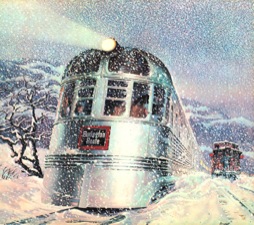

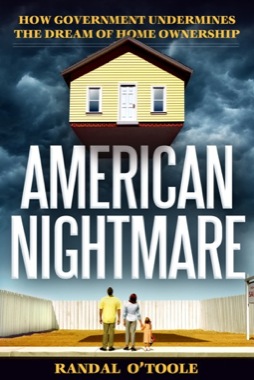
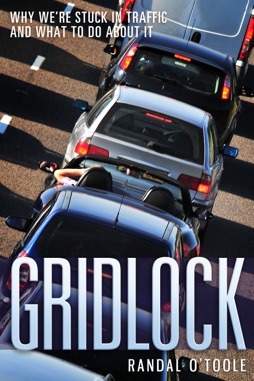
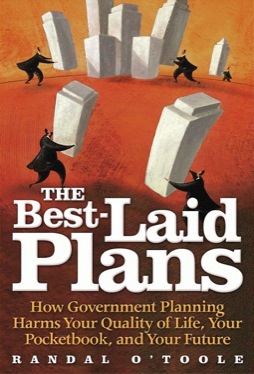
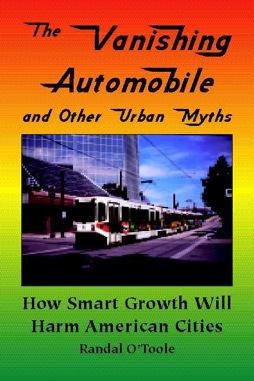
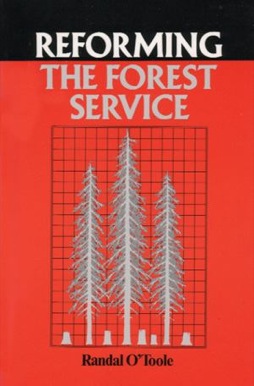
Another example of big government bureaucrats literally bulldozing peoples’ freedom and mobility, while promoting the fake climate change agenda to force people out of their suburban homes:
https://x.com/ScottMurphyInLA/status/1876763323615608995
Another example of deadly climate change-fueled fires killing Los Angolans:
1933 Griffith Park fire
Largest wildfires
#9: Santiago Canyon | Orange, Riverside, San Diego counties | 300,000 acres | September 1889
schit for brains these fires are not “Climate Change” but they are Human-Induced.
Fire’s role in dryland ecology is known, documented, studied, and researched, It substitutes the role normally reserved by decomposers like bacteria and fungi predominantly in wetter ecosystems. In more humid and wetter environments rotifers/decomposers will break down wood/plant matter into soluble nutrients for plant uptake and Fungi harness/store them in water soluble format for subsequent later use. In xeric ecosystems this process is not as efficient due air having to lower humidity thus shallow decomposers do not proliferate well . So fire substitutes that role by charring material into water soluble ash.
Climate change is not responsible for these catastrophic fires; it’s California’s land use practices which have been problematic ever since late 1800s and personified in the movie “Chinatown”
For the last 120 years, the big cities and agriculture business have pulled water from Major rivers, Sierra Nevada mountains and sub surface wells and springs which have been tapped to accommodate domestic water consumption so LA County residents and suburbanites can have jungle plants in a xeric climate. They want tropical gardens for homes in Hollywood, Beverly Hills that requires Over 35+ inches of rain a year, Ecoregions of Southern California; they only get an average 11-12. In LA’s case they got 14 last year, above average rainfall.
Combine….
– A drastic reduction in the natural ground water due decades of well tapping without significant replenishment
– The replacement of native vegetation with weedy, waterhogging invasives (and sometimes oil rich plants like Eucalyptus)
– Suburban houses made of dried WOOD and lawns and gardens made of plants not suited for the environment and a hardscape that doesn’t support water retention.
It is a recipe for disaster. So the subsurface water has been depleted; Western US’s forests have lost significant ground water; soil moisture has heavily declined, so trees have to scrounge water where they can, becoming dry tinder in the summer.
Logging wont stop fires since the brush, leaves, needles, prescribed burns wont stop fires however they will mitigate them.
The solution mitigating Californias (as well as many Western) Wildfire problems (Not fixing, which it shouldn’t ecology of region fixed on this type of regeneration) but huge help deter catastrophic types of fires that burns hundreds of thousands of acres a year.
1: Install rainwater recharge pits. When a well is depleted or low productivity, it is often abandoned or they dig an adjacent well which may fail. Instead, the surrounding area around the well would be dug up and replace it with a surrounding pit of rock and gravel and filtering sand….. and channel rainwater to refill the well; a filter membrane of activated charcoal, Sterilized sand will suffice. Water from Agricultural runoff, treated water.
2: Despite the appearance of green, half or more landscape in suburban or inter-urban areas are in fact hardscape, thus impermeable. With hardscape water cannot penetrate and just runs off down street to storm drains, the LA River is just One large GUTTER more famous in movies for Car chases than storm water management.
https://www.youtube.com/watch?v=6z9qws7M8q8
Los Angeles covers 469 square miles, so even an inch of rain produces 4 BILLION gallons most of which sweeps impervious surface, Making our hardscape semi-permeable
https://www.youtube.com/watch?v=huO_NRn34GI
3: Rain Garden. Unlike traditional gardens which are often maintenence heavy and water thirsty; the Rain Garden is a planted depression often ignored infill; re-engineered soil medium to capture considerable portion of the rainfall that goes into it. The first were invented in Prince Georges County, Maryland in 1990 to mitigate cost of typical suburban/urban style drainage/gutter and stormwater diversion and years after first trial run in Somerset cut stormwater run off 75%.
LA get’s 14 inches of rain a year, 114 Billion gallons , enough to put out nearly any blaze.
janehavisham,
That’s more an example of government failing to provide sufficient evacuation routes, as previously documented elsewhere in California here.
Yglesias is a red diaper baby so he tends to disparage any for-profit organization. To his credit he pisses off the left as well as the right. He’s no dummy but – as he has done with Blackrock – he frequently gets over his skis.
New York congestion pricing wreaking havoc on this working class African American man’s life as he struggles to commute to his work:
https://x.com/dahvnyc/status/1877090910778843316
New Yorkers will love Congestion pricing, Til of course we see how many jobs migrate. You know who loves New York’s congestion pricing more?… New Jersey. Think of all the jobs you can attract if you just build 10 multi-story garages
do they have progresive tax schemes? make the pricing also progressive perhaps?
Another working-class driver speaks out about the unpleasant experience that he is forced to contend with thanks to the “stupid” (his words, not mine) NYC congestion pricing, as he attempts to cross Manhattan from Brooklyn to the Holland Tunnel:
https://x.com/dahvnyc/status/1877091514167263564
“You know who loves New York’s congestion pricing more?… New Jersey”
Weird that New Jersey went to court in a failed attempt to block congestion pricing, since they love it so much.
Rock-ribbed California progressives looking forward to working hand-in-hand with local planning commissions to rebuild their homes ravaged by evil fossil fuels:
https://x.com/EricAbbenante/status/1877207054105886836
There are certain areas where institutional investors and speculators are a problem with regards to housing affordability. Thus, I would not call it a non-issue. However, at the same time the effect of urban containment generally is much worse with regards to housing affordability. Also, urban containment likely has a compounding effect on any time of rent that buying out a market for rentals might have.